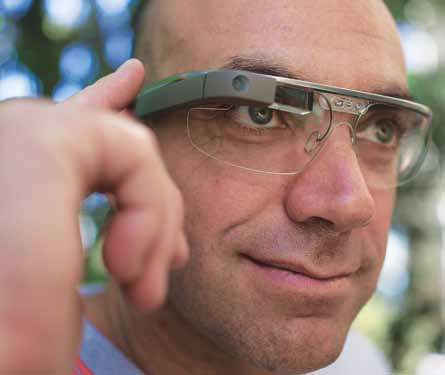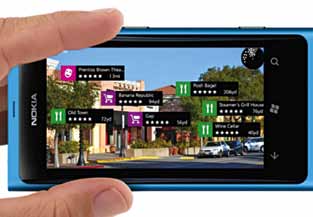
In the present smartphone era, tech giants like Apple, Microsoft and Google are continually striving to make the smartphone smarter. Real-ising the highly competitive market and need to deliver more advanced features to the users, many smartphone developer companies have incorporated in the latest smartphones a new technology called augmented reality.
Augmented reality is the live, direct or indirect, view of a physical, real-world environment whose elements are augmented by computer-generated sensory inputs such as sound, video, graphics or GPS data. The technology functions by enhancing one’s current perception of reality.
Virtual reality replaces the real world with a simulated one. In contrast, augmented reality basically pulls the graphics out of your display screen and integrates them into real-world environments. This technology blurs the line between what’s real and what’s computer-generated by enhancing the vision. With the help of advanced augmented reality technology, by adding computer vision and object recognition, the information about the surrounding real world of the user becomes interactive and digitally manipulable.
Some of the latest smartphones with augmented reality features are exemplifying the potential of augmented reality. Google Inc., renowned for setting technological trends, is on the verge of setting a new technological acme of augmented reality with its upcoming product called Google Glass.
What Google Glass does
The Google Glass device is essentially a pair of augmented reality goggles that run on Google’s Android mobile operating system. The prototype was unveiled to public by Sergey Brin, cofounder of the company, at the I/O conference for computer programmers held in San Francisco on June 27, 2012.
The unveiled prototype includes a small see-through screen slightly above your field of view, which can display maps, record images and send texts. The product displays information in smartphone-like hands-free format and could interact with the Internet via natural language voice commands.

It is being developed by Google X Lab, which has worked on other futuristic technologies such as self-driving cars. Though head-worn displays for augmented reality are not a new idea, the project has drawn media attention primarily due to its backing by Google. Also, this prototype is quite smaller and slimmer than the previous designs for head-mounted displays.
Features of the device
In-built camera. Google Glass comes with an in-built camera. A button is provided on the top to take photo snaps instantly. Google Glass users will be able to take hands-free pictures by using voice-activated commands.
Photo sharing. Just like with Google smartphones, photo sharing is an integral feature of the Google Glass device.
Voice recognition. Google Glass is equipped with Google’s state-of-the-art voice recognition feature. In addition, it provides information about the locations and places of interest. On top of this, you can store reminders and create notes using voice command.
Calendar/appointments. Calendar and appointments function is perhaps the most practical element of the new augmented reality device. Users can set the calendar such that it always appears in one of the screens on one of the lenses. This allows users to always have access to their current schedule without having to flip through a smart-phone device.
Connectivity. Google Glass is supported by 3G and 4G connectivity including GPS support and Google Maps.
Google+ services. Via Google Glass, you can connect to Google+ as well and avail its corresponding services.
Weather forecast. The current weather forecast could be comprehended on the move on the Google Glass screen.
Google Search. Any Google product is simply incomplete without the groundbreaking Google search engine. The world’s most popular search engine can be accessed on the screen of Google Glass with just a simple voice command.
Video chats. Video chats and calls can be made on Google Glass.
In addition, the Google Glass features video gallery, Google images and the all-powerful Google Cloud. The system uses individual skin tone and hand shape recognition to ensure that only one user’s commands are followed.
The patent also mentions that the camera will be able to track the user’s hand, allowing it to touch virtual controls via coloured dots in the heads-up display. Essentially, you will be able to interact with a user interface that sits right in front of your face.
User experience
Well, you just need to wear the device and look up at the sky, and a weather forecast will appear on the little screen over your eyebrow. Head down the stairs into the subway, and the glasses will show you whether trains are on time or not. Walk down the street and get turn-by-turn directions. See something you would like to share with friends, and the images your glasses shoot will go to their Google+ social-media accounts.
At the Google I/O conference, the product (Google Glass Explorer Edition) was first made available to United States Google I/O developers for $1500, shipping early in 2013, while a consumer version is slated to be ready within a year of that.
According to Brin, that’s just the beginning. He expects developers to use this device and help enhance its technology to produce unsurpassable results.
The Google Glass can potentially replace the mobile phone itself and show this world yet another technology phase shift, which Google is famous for!
The author is a regular contributor to EFY










